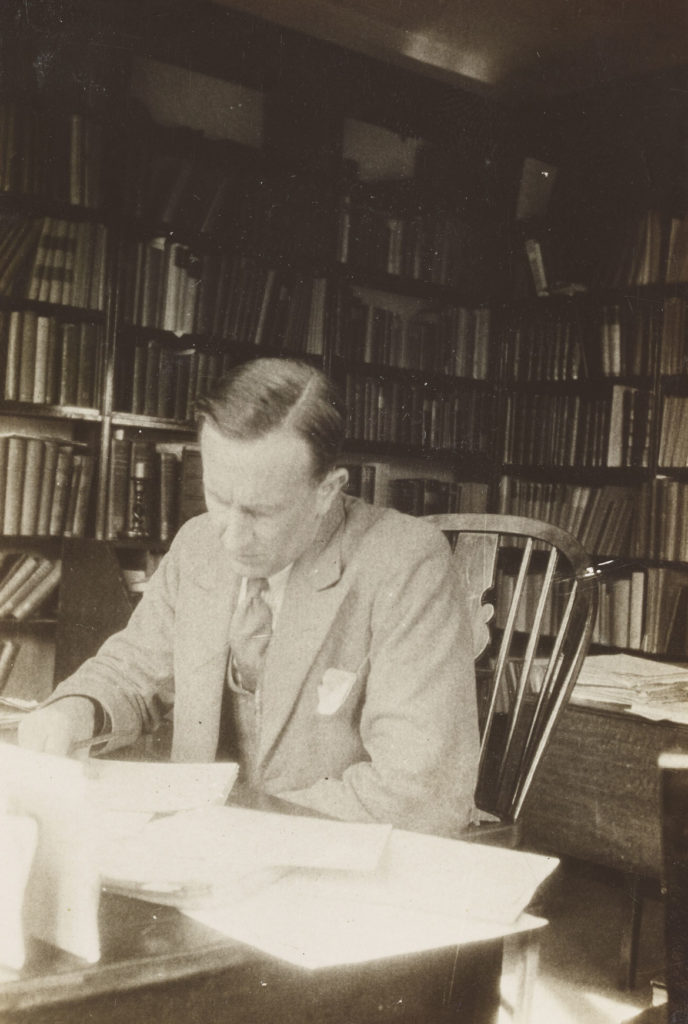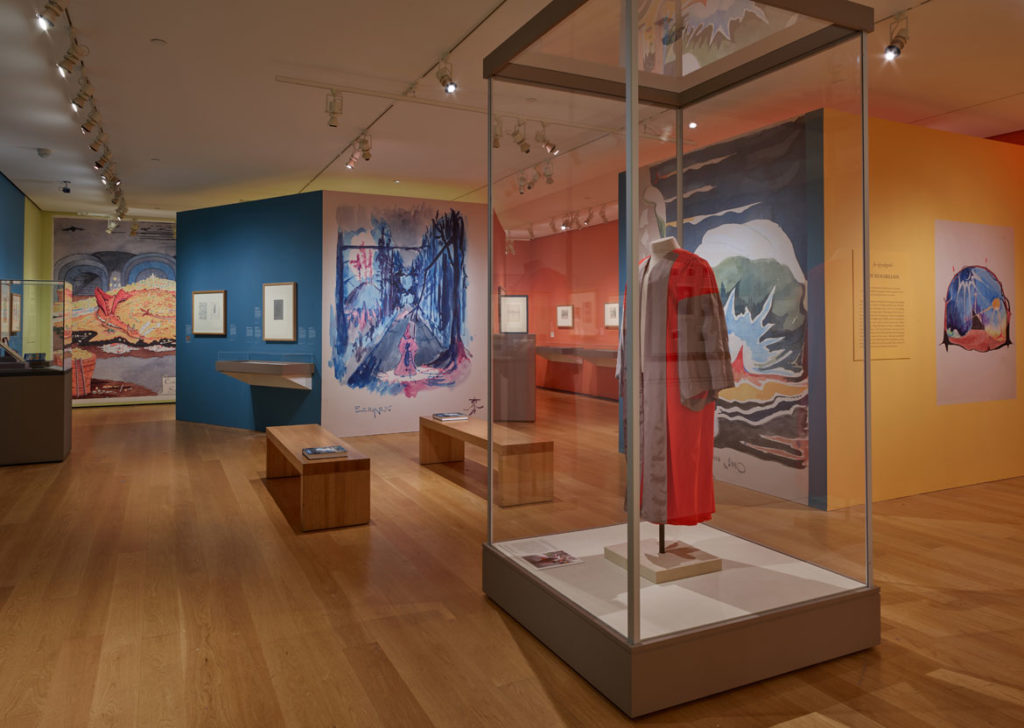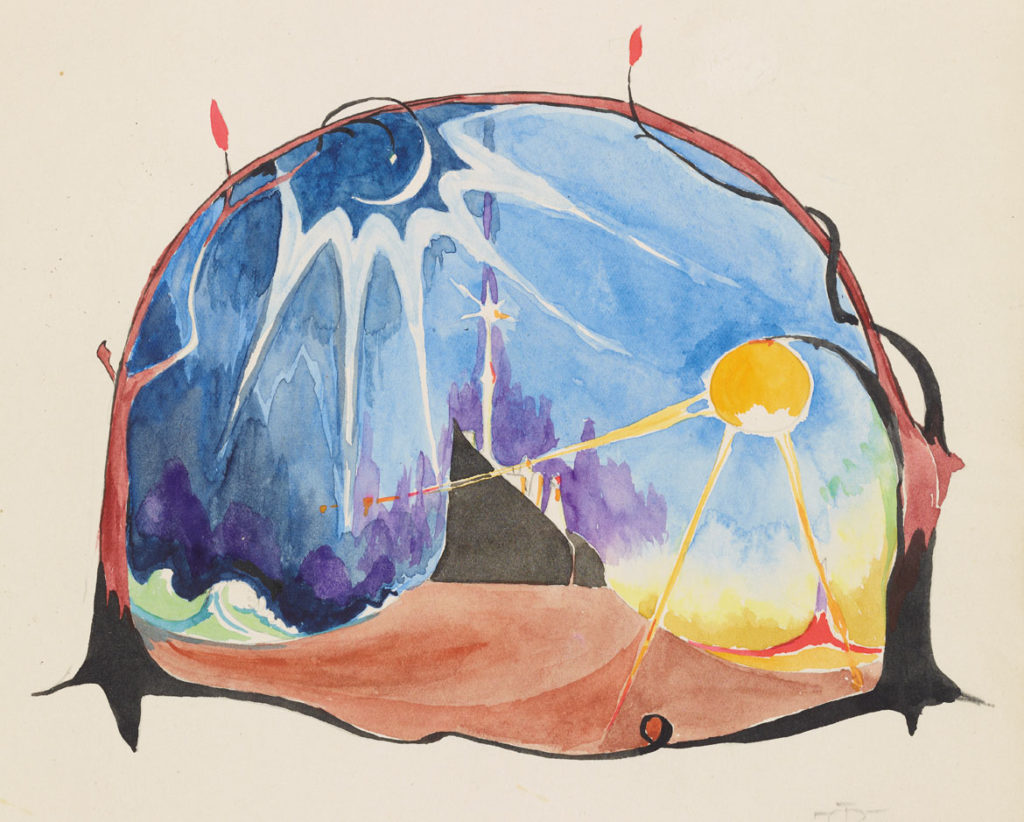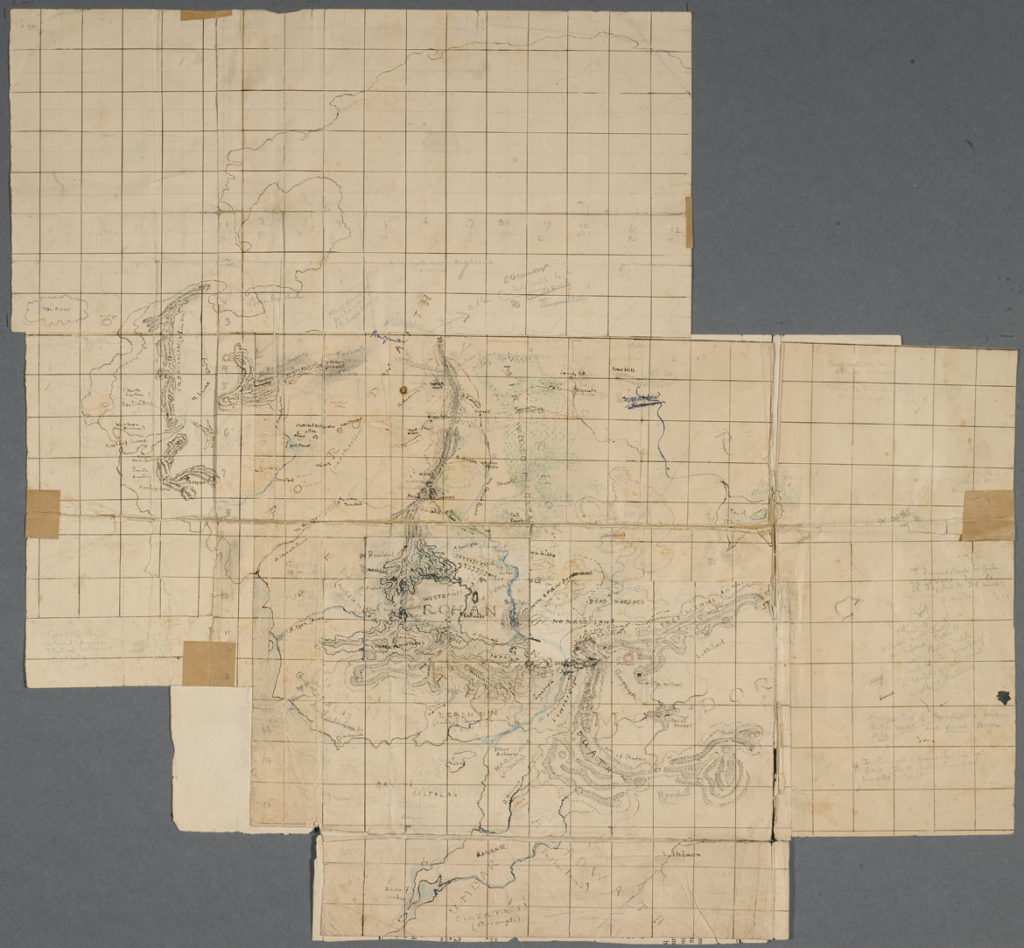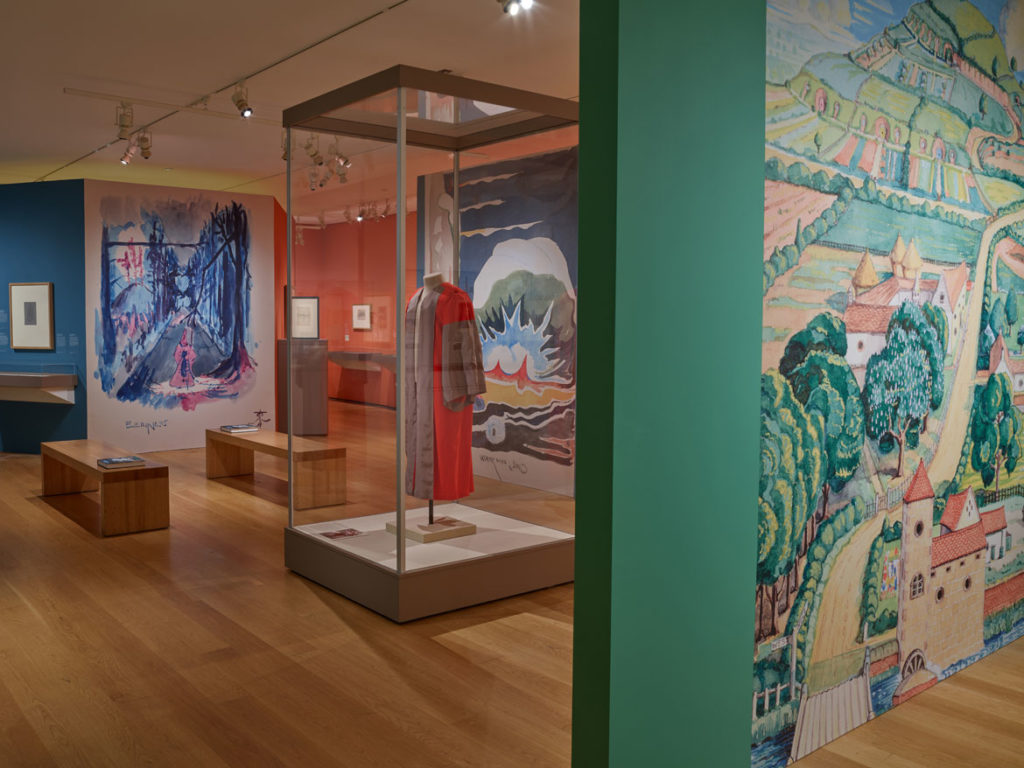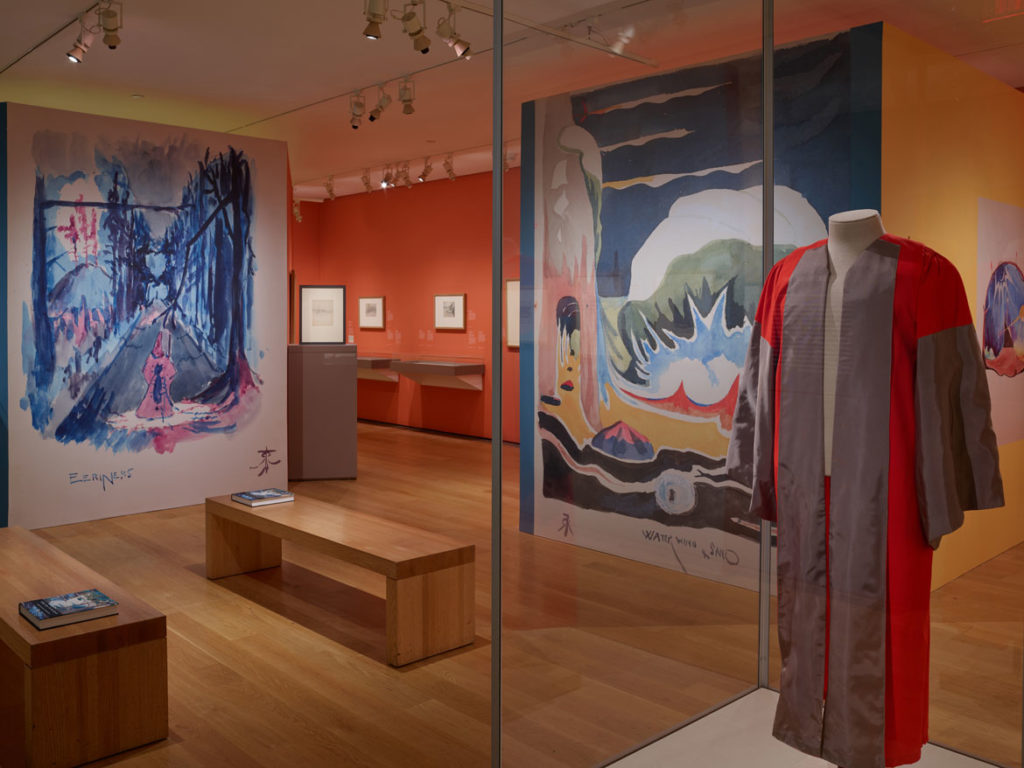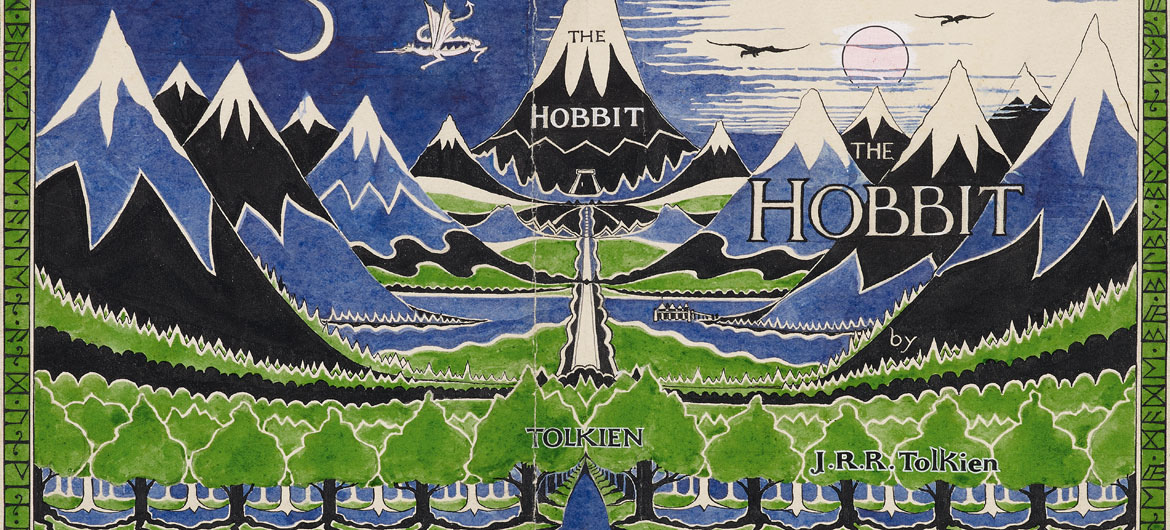In the fall of 1936, as the first edition of “The Hobbit” was in production, its author, J.R.R. Tolkien, gave his publisher a series of maps that he’d drawn to augment the adventure tale. The publisher, Allen & Unwin, asked that he simplify the shading and colors to be reproduced more economically in just two colors.
When Tolkien sent in the revised maps in January 1937, he included a handful of illustrations that he’d made of Lake Town, the eerie Mirkwood, a river and smoke pouring out of the Front Gate into the mountains, and a bridge spanning a river to the Elvenking’s Gate nestled among the trees at the foot of a mountain. “They are not very good and may be technically unsuitable,” Tolkien wrote to his publisher.
The surprise was that Tolkien’s drawings weren’t crap. “They were so charming that we could not but insert them, although it was quite wrong to do so,” Susan Dagnall, an assistant at the firm, wrote.
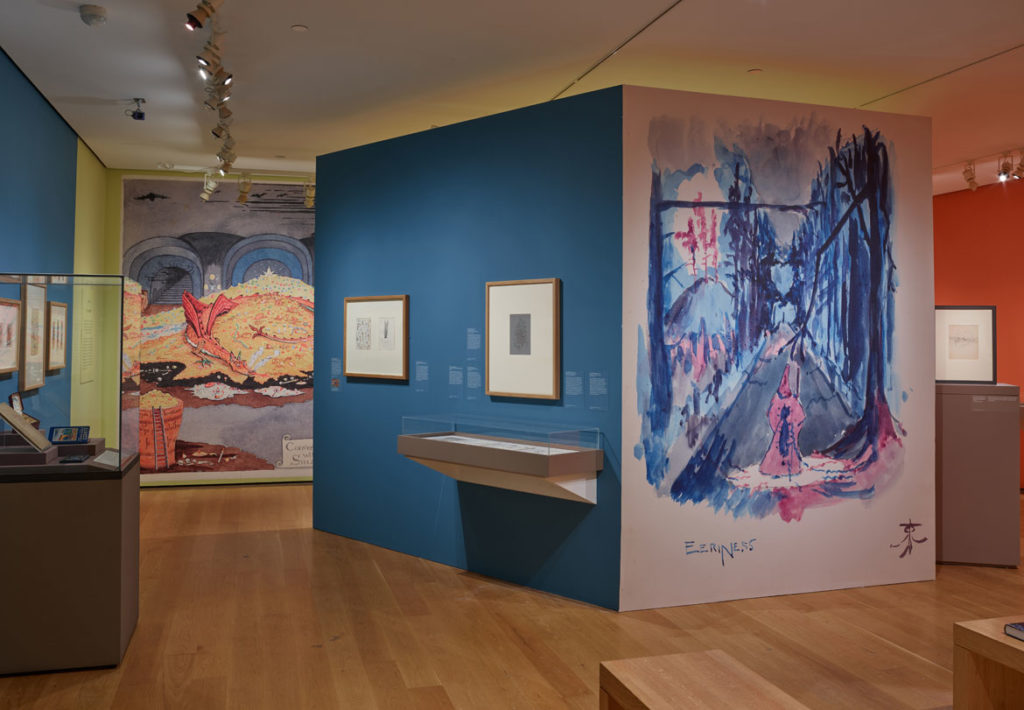
See for yourself in “Tolkien: Maker of Middle-earth,” organized by Bodleian Libraries at Britain’s University of Oxford and on view at New York City’s Morgan Library & Museum from January 25 to May 12, 2019. The exhibition offers 117 objects—family photographs and memorabilia, Tolkien’s original illustrations, maps, draft manuscripts, and designs related to “The Hobbit,” published 1937, “The Lord of the Rings” (1954-55), and “The Silmarillion,” published posthumously in 1977.

Tolkien was orphaned by age 12, served in the First World War, and rose to become an Oxford don and renowned scholar of old and middle English, but he is most remembered for his epic fantasy novels.
The maps seem integral to Tolkien’s development of the tales, to his laying out the travels at the center of his stories and considering how long they would take his characters. The exhibition includes “the first Silmarillion map,” with characters and places and rivers marked in red and black ink on an unused page from an examination booklet from the University of Leeds, where Tolkien taught from 1920 to 1925. He kept updating it, adding annotations in pencil, until at least 1930.
As Wayne G. Hammond and Christina Scull recount in their 2012 book “The Art of The Hobbit,” the first illustrations Tolkien provided his publisher were redrawn from his “home manuscript,” a much amended copy of “The Hobbit” as he began telling it to his children in the late 1920s and then, between 1933 and ’36, shared with friends and acquaintances, until it came to the attention of Dagnall.
“I do not remember a time when I was not building it,” Tolkien (1892-1973) would later say of his tales of Middle-earth.

Tolkien’s talent with drawing and painting remains surprising. It’s still not that common for a good writer to be good at art too, even among children’s book illustrators or cartoonists.
During Tolkien’s undergraduate studies at Oxford, he illustrated Samuel Taylor Coleridge and the Finnish “Kalevala” and drew from his imagination. Beginning in the 1920s, he wrote and illustrated annual Christmas stories for his four children.
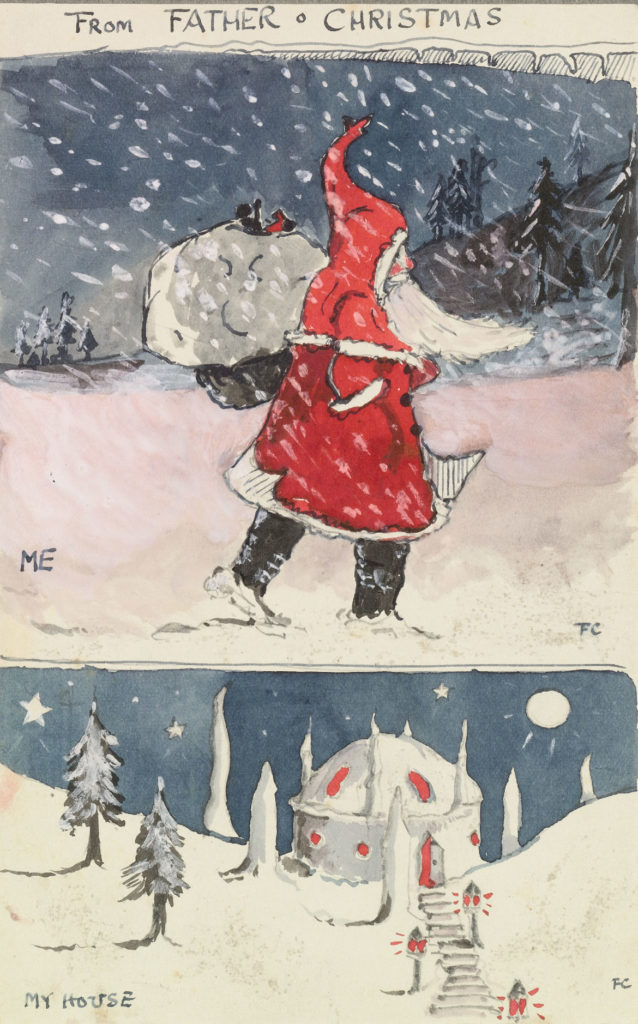
After Tolkien’s publisher liked his first batch of “Hobbit” illustrations, Tolkien sent more—trolls, Bilbo Babbins’s hall at Bag-End, the lightning of a winter storm crackling along a mountain path.
His vision of Middle-earth recalls the landscapes of his youth in rural England—Berkshire houses and fields, his cousins’ garden, the rocky Cornwall coast. A 1911 visit to the Swiss Alps shaped his spiky mountains. His eagle was based on a painting of a young golden eagle by Alexander Tornburn in Lord Lilford’s 1891 “Birds of the British Islands.” His drawing of trolls was inspired by Jennie Harbor’s illustration of “Hansel and Gretel.”

Tolkien’s stylization calls to mind Art Nouveau stained glass, turn-of-the-20th-century illustration, Aubrey Beardsley. Later, one would find echoes of his black and white ink drawings for the first British edition of “The Hobbit” in early illustrations for Dungeons & Dragons players manuals.
“They are all obviously defective,” Tolkien wrote of his second batch of “Hobbit” illustrations. But his publisher continued to support his art, and in fact invited him in February or March 1937 to illustrate the book’s dust jacket. His breathtaking view shows a road running straight up the spine, through symmetrical green woods and blue-black snowcapped mountain peaks. In the original artwork, in the exhibition, Tolkien had a red dragon and sun in the sky. But in the left margin, his publisher, ever conscious of the cost of adding another color, penciled “Ignore red” and painted them over with white.
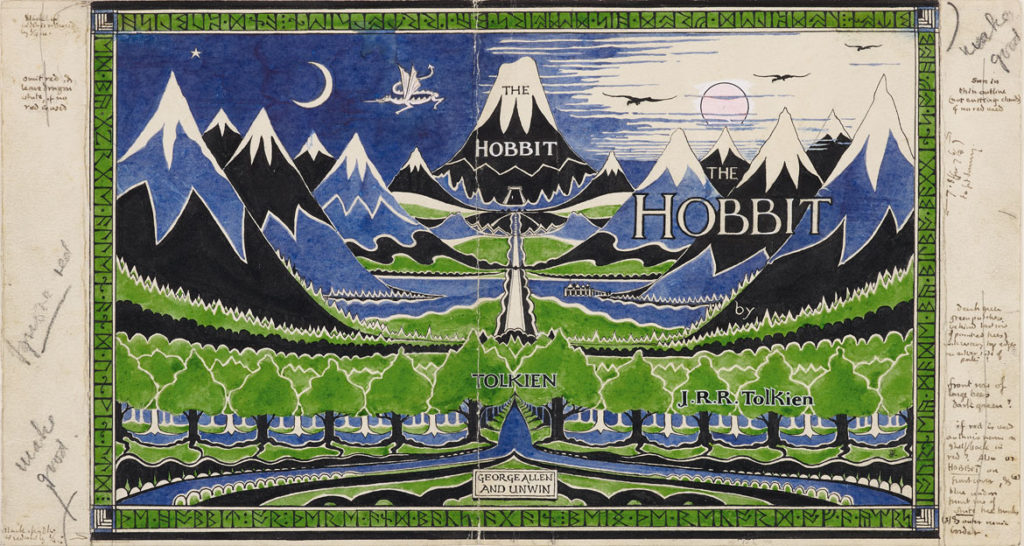
After the British edition appeared, his American publisher, Houghton Mifflin Company, sought to add color illustrations by an American artist for the U.S. edition. But at the suggestion of Tolkien’s British publisher, Tolkien himself ended up painting small watercolors of Rivendell’s rushing river canyon, the rolling green hills of Hobbiton and the dragon Smaug, contentedly wrapped around his horde of gold.
Tolkien struggled with rendering figures and could be clumsy with animals, which he concealed by generally making them small. His talent is for epic, stylized, mystical landscapes—banded by roads that call you to adventure.
Related: Interview: Guy Gavriel Kay On His New Novel ‘A Brightness Long Ago,’ Tolkien, Reimagining History
If this is the kind of coverage of arts, cultures and activisms you appreciate, please support Wonderland by contributing to Wonderland on Patreon. And sign up for our free, weekly newsletter so that you don’t miss any of our reporting.
